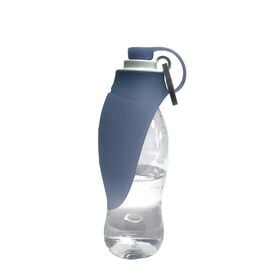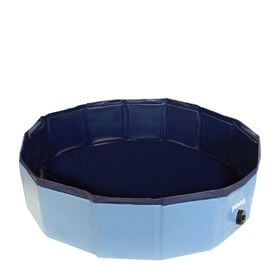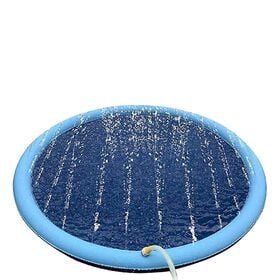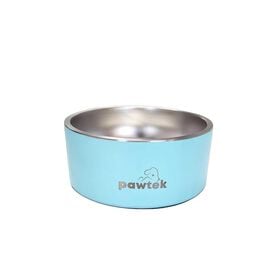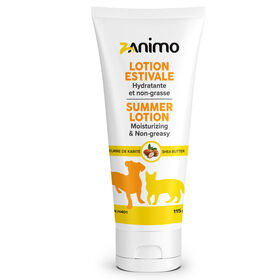During summer, there are a few basic rules to keep in mind to help your pets enjoy the hot weather.
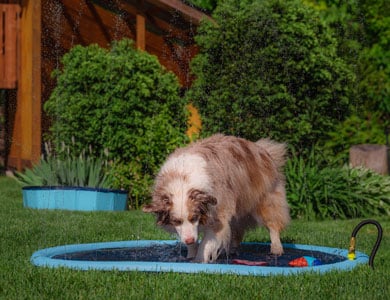
Heat regulation
Thermoregulation is a process that allows your body to maintain its internal temperature by releasing excess heat. In humans, sweat plays a key role in thermoregulation and can occur on almost any surface of the body. This process is different for dogs and cats. Since pets sweat only through their paw pads, they have to compensate with other ways of getting rid of excess heat, such as panting.
What is heat stroke?
It is a condition characterized by a marked increase in body temperature (fever or hyperthermia) resulting from exposure to outside heat, disturbance in thermoregulation mechanisms and the body’s inability to cool itself. In short, heat stroke occurs when the body can no longer regulate its temperature, which is potentially dangerous.
Which animals are at risk?
Although all animals are susceptible to heat stroke, some are more at risk. For example:
- young dogs and cats
- older pets with heart disease
- overweight pets
- some brachycephalic (short-nosed) breeds
Also read: How to help your cat stay cool in the summer heat
How to avoid heat stroke
With a few simple precautions, you can help your pet cope better with heatwaves.
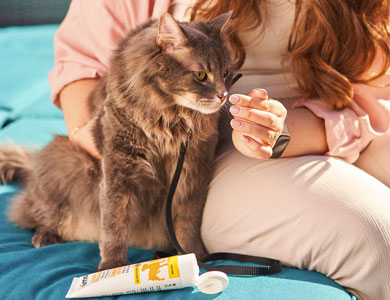
Basic rules to follow
- Dogs and cats should have access to a bowl of fresh water at all times.
- Intense physical activity should be avoided during the day. Instead, save it for the morning or evening, bring water for your dog, and look out for signs of heat stress and paw pad burns. To protect them, you can apply a moisturizing balm under the paws.
- Never leave an animal in a vehicle (or an enclosed space) in mild or hot weather, even if there’s no sun. Enclosed animals are at very high risk and dogs can die in a few minutes when outdoor temperatures reach 20°C to 25°C.
- When the sun’s shining, a dog should not be left tied up outside without access to shade.
- For dogs that enjoy staying out in hot weather, don’t hesitate to wet down their fur once or twice a day, being careful to avoid their ears. You can also set up a small pool if they are interested.
- If your cat tends to lie in front of a sunny window, just shut the blind or curtain.
Also read: Dog swimming safety tips: keeping cool responsibly
Cooling accessories
Several accessories are available to help pets endure periods of intense heat. For example, dogs can play with toys that have been put in the freezer, like an OBEE! Stuff filled with wet food. There's also frozen yogurt specially designed for them. You can put creamy treats in the freezer for your cat to lick once they've hardened.
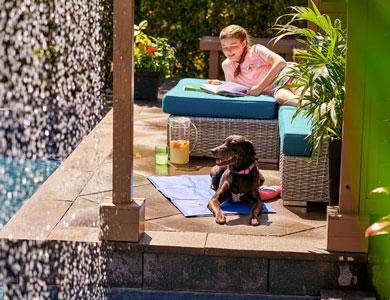
Cooling vests, bandanas, and other accessories can all help keep your dog comfortable. These items are filled with gel and are effective for several hours. If your dog prefers to stay outside, a cooling pad or a splash and spray mat can offer relief from the heat. Additionally, consider using caps, UV clothing, and sunscreen to protect your pet from the sun.
What to do in the event of heatstroke?
Signs of heat stroke are not always easy to spot in big dogs that tend to pant heavily. However, if the panting seems excessive, don’t hesitate to visit your veterinarian immediately. If the clinic is more than five minutes away by car, keep your dog cool with wet towels.
Since cats don’t pant, it may be more difficult to identify signs of heat stroke. If your cat is lethargic and doesn’t respond to your presence or calls, you should go to the nearest veterinary clinic.
When temperatures rise, the important thing is to be vigilant, and provide a suitable environment with plenty of bowls of fresh water for your furry friends. Have a great summer!



